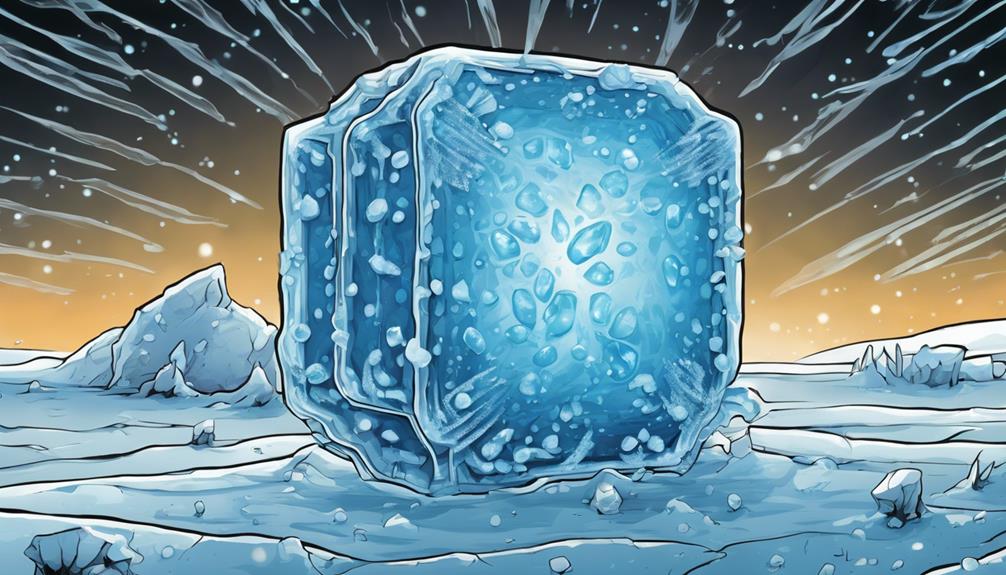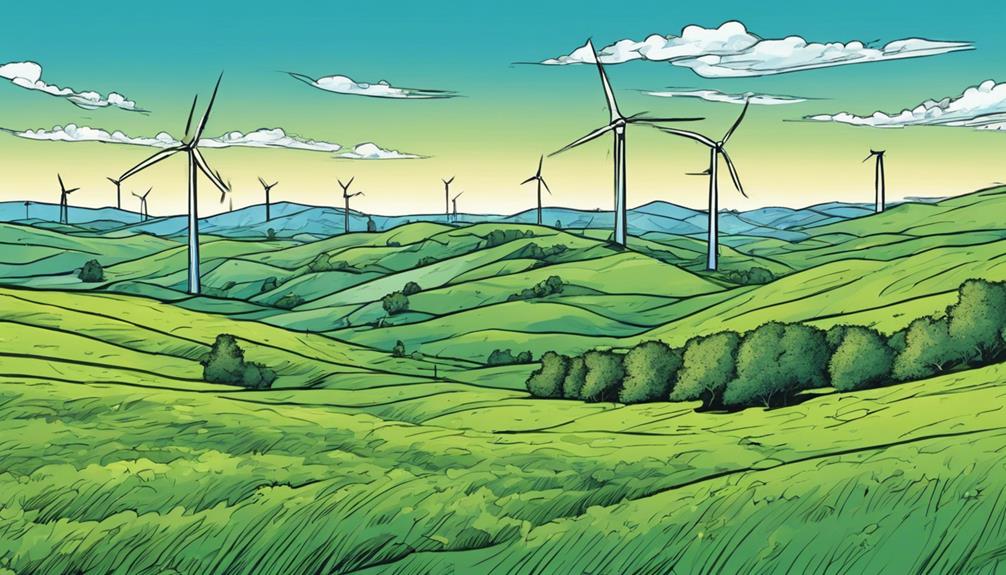Optimizing fuel cells for chilly conditions is essential to maximize their full potential in cold weather applications, as even slight temperature drops can impact their performance and efficiency. Lower temperatures slow down chemical reactions, compromising energy conversion and reducing power output and lifespan. Understanding these effects is important for efficient operation in cold climates. By addressing the challenges of infrastructure, implementation costs, and maintenance, fuel cells can provide reliable and sustainable energy solutions in harsh winter environments. Learn how advancements in materials and design are enhancing fuel cell performance in low-temperature conditions.
Key Takeaways
- Lower temperatures slow down chemical reactions in fuel cells, compromising efficiency and power output.
- Insulation and heating solutions are crucial to maintain optimal performance in cold weather conditions.
- Advancements in materials and design can enhance fuel cell efficiency and performance in low-temperature conditions.
- Cost-effective solutions for insulation and heating are necessary to overcome implementation challenges.
- Ongoing research and collaborations are driving innovation in cold weather fuel cell applications.
Temperature's Impact on Performance
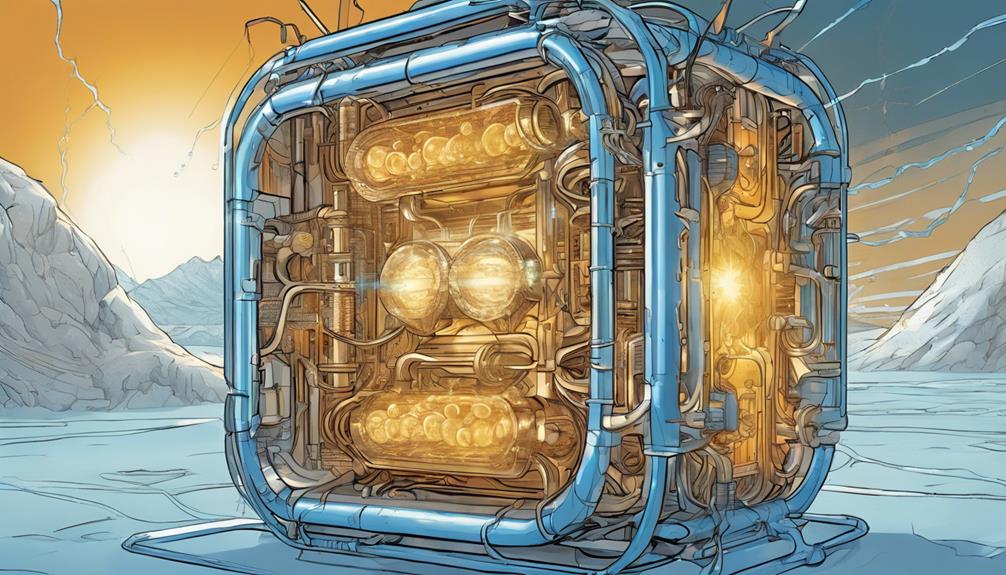
Temperature fluctuations have a profound impact on the efficiency and overall performance of hydrogen fuel cells. Lower temperatures slow down the chemical reactions that occur within the cell, compromising the fuel cell's ability to convert chemical energy into electrical energy. This reduction in efficiency greatly impacts the overall performance of the fuel cell, leading to decreased power output and reduced lifespan.
Additionally, extreme temperatures can also affect the durability of fuel cell components, further compromising their performance. It is essential to understand the effects of temperature on fuel cell performance to develop strategies for optimizing their operation in cold weather conditions.
Cold Weather Advantages Uncovered
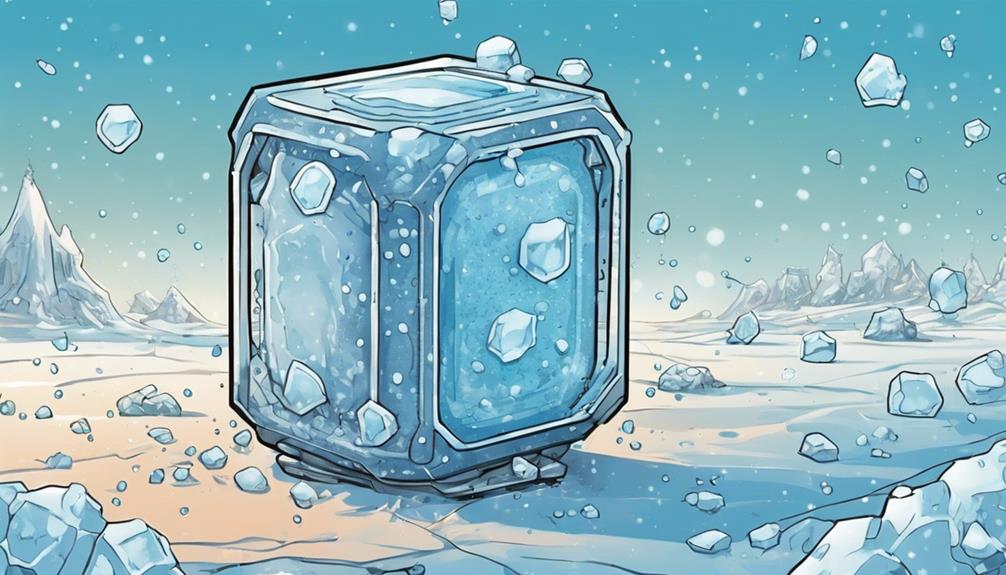
Hydrogen fuel cells possess inherent advantages that make them an attractive option for transportation and power generation in cold weather conditions, owing to their ability to maintain consistent performance and efficiency in low temperatures.
Compared to traditional battery-electric vehicles, hydrogen fuel cells offer several benefits in cold climates:
- Faster refueling times: Refuel in minutes, not hours.
- reliable performance: No loss of efficiency in low temperatures.
- extended ranges: Travel farther without needing to refuel.
- sustainable alternative: A green energy solution for cold regions.
These advantages make hydrogen fuel cells an appealing choice for regions with harsh winters, where reliable and efficient energy solutions are vital.
Applications in Harsh Climates

Fuel cell technology is being increasingly explored for its potential to power a wide range of applications in harsh, cold climates. This includes transportation and off-grid systems to backup power and military equipment. In these regions, fuel cells can provide a reliable and sustainable source of energy.
For instance, fuel cell-powered buses, trucks, and trains can operate efficiently in freezing temperatures, ensuring uninterrupted transportation services. Moreover, hydrogen fuel cells can power off-grid systems in remote areas with harsh winters, providing electricity and heat to communities in need.
In addition, fuel cells can serve as backup power for critical infrastructure, such as hospitals and emergency services, during extreme weather events.
Overcoming Implementation Challenges
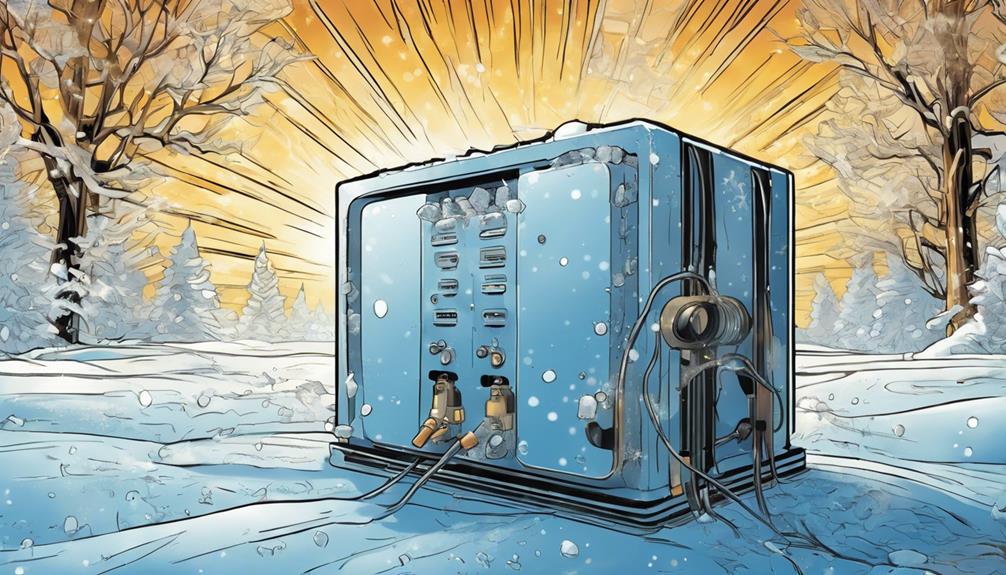
Despite the promising benefits of fuel cell technology in cold weather applications, several challenges must be addressed to guarantee successful implementation in harsh climates. One of the significant hurdles is the limited infrastructure for hydrogen refueling stations in cold regions, making it difficult to access fuel.
Additionally, the cost of implementing hydrogen fuel cells in cold climates can be higher due to the need for additional insulation and heating mechanisms.
To overcome these challenges, it is essential to:
- Develop cost-effective insulation and heating solutions to maintain peak fuel cell performance.
- Increase investment in hydrogen infrastructure to support widespread adoption.
- Improve the durability and reliability of fuel cell systems in cold weather conditions.
- Enhance maintenance procedures to minimize downtime and ensure uninterrupted operation.
Future of Cold Weather Technology
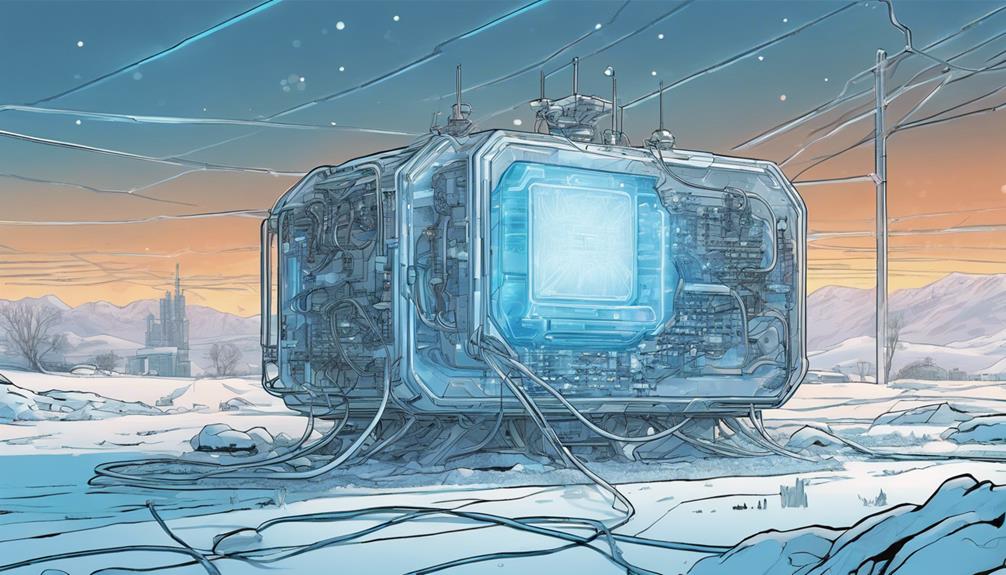
As researchers and manufacturers continue to address the challenges of implementing hydrogen fuel cells in cold weather applications, advancements in materials and design are expected to play a key role in enhancing fuel cell efficiency and performance in low-temperature conditions.
Ongoing research aims to improve the cold weather performance of fuel cells, with a focus on developing more efficient and durable components. Collaborations between automakers and energy companies are driving innovation in cold weather fuel cell applications, while government initiatives support the development of hydrogen infrastructure in cold regions.
The integration of fuel cell technology with renewable energy sources is a promising trend for cold weather applications, offering a sustainable and efficient solution for transportation and power generation in harsh winter environments.
Frequently Asked Questions
Can Fuel Cells Be Used in Extremely Cold Temperatures Like Antarctica?
Yes, fuel cells can operate in extremely cold temperatures like Antarctica, but they require specialized insulation, heating systems, and cold-weather adapted designs to maintain performance and durability in such harsh environments.
How Does Humidity Affect Fuel Cell Performance in Cold Weather?
Humidity greatly impacts fuel cell performance in cold weather, as excess moisture can freeze and block reactant flow, reducing efficiency and increasing the risk of fuel cell degradation and failure.
Are Fuel Cells More Expensive Than Traditional Engines in Cold Climates?
Ironically, the eco-friendly fuel cells, designed to save the planet, come with a hefty price tag. Yes, fuel cells are more expensive than traditional engines in cold climates, mainly due to the added insulation and heating mechanisms required to maintain best performance.
Can Fuel Cells Be Used to Power Homes in Cold Regions?
Yes, fuel cells can be used to power homes in cold regions, providing a reliable and sustainable alternative energy source, particularly in off-grid areas with harsh winters where traditional grid connections are limited.
Are There Any Safety Concerns for Fuel Cells in Cold Weather Conditions?
While fuel cells offer a reliable alternative energy source, cold weather operation raises unique safety concerns, including increased risk of hydrogen embrittlement, fuel leakage, and electrical component failure, underscoring the need for robust insulation and heating systems.
How Does Lattice Energy Strength Impact Fuel Cell Performance in Chilly Conditions?
In chilly conditions, the secrets of lattice energy strength play a crucial role in fuel cell performance. The stronger the lattice energy, the better the fuel cell can withstand the cold and continue to operate efficiently. This is because higher lattice energy helps to maintain stability and conductivity even in harsh temperatures.
Conclusion
Optimizing Fuel Cells for Cold Conditions
Temperature's Impact on Performance
———————————–
Hydrogen fuel cells, touted as a beacon of hope in the quest for sustainable transportation, are not immune to the whims of temperature. Lower temperatures slow down chemical reactions, reducing efficiency and affecting durability. As the mercury drops, fuel cells' performance flags, highlighting the need for innovative solutions to mitigate this impact.
Cold Weather Advantages Discovered
——————————-
Paradoxically, hydrogen fuel cells offer several advantages in cold climates. Faster refueling times, consistent performance, and longer ranges make them an attractive alternative to battery-electric vehicles. Like a phoenix rising from the ashes, fuel cells' unique strengths shine bright in the harsh, cold light of winter.
Applications in Harsh Climates
—————————–
From the snow-capped mountains of Scandinavia to the frozen tundras of Siberia, hydrogen fuel cells are being explored as a viable option for transportation in extreme cold. As the world shifts towards a more sustainable future, the ability to operate efficiently in harsh climates will be pivotal.
Overcoming Implementation Challenges
——————————–
Despite the advantages, implementing hydrogen fuel cells in cold weather poses significant challenges. Freezing temperatures can cause fuel cell components to fail, and the lack of infrastructure in remote areas hinders widespread adoption. Researchers are working tirelessly to overcome these hurdles, driven by the promise of a cleaner, greener future.
Future of Cold Weather Technology
———————————
As the demand for clean energy solutions continues to grow, optimizing fuel cells for cold conditions has become a critical area of research and development. Like an artist adding the final brushstrokes to a masterpiece, scientists are fine-tuning fuel cell technology to maximize its full potential in cold regions, paving the way for a sustainable transportation revolution.
Conclusion:
As the world hurtles towards a more sustainable future, the optimization of fuel cells for cold conditions is a pivotal step. By bridging the gap between technology and climate, we can unleash the full potential of fuel cells, and in doing so, create a transportation sector that is as clean as the driven snow.
